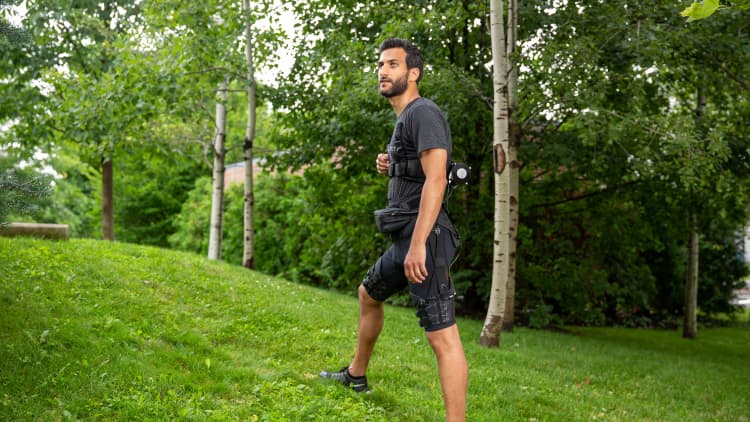
Many workers dream of amplifying their physical strength and speed on the job — especially if they do manual work requiring heavy lifting, a high degree of walking and climbing. Recognizing the issue, a team of researchers have developed an exoskeleton robotic device that can be used in the workplace to help boost productivity and reduce bodily stress and injury.
Their lightweight exosuit is made of textile components worn at the waist and thighs, and a mobile actuation system attached to the lower back that is controlled by an algorithm that can robustly detect the transition from walking to running and vice versa through sensors. Its flexible power systems and control strategies integrate the suit and its wearer in ways that mimic the natural biomechanics of the human musculoskeletal system.
It was developed by a team of researchers at Harvard University's Wyss Institute and the University of Nebraska Omaha, and it is worn like robotic shorts to augment human performance.
According to Conor Walsh, Ph.D., and founder of the Harvard Biodesign Lab who led the study at the Wyss Institute, "while exoskeletons have been used up to now for stroke victims with gait impairments, and patients suffering from Parkinson's disease and multiple sclerosis for mobility assistance, there are occupational and workplace uses for them as well."
"The devices are now being tested in various workplace environments, such as large distribution centers and automotive plants," Walsh says, adding that it boosts an individual's physical strength or momentum, reducing strain by 20% to 30%.
This device has great applications as our workforce ages. It helps older workers involved in strenuous activity, says Walsh, and it enables people to do the same types of jobs for longer. That's because it reduces the metabolic rate while walking and running.
The Wyss Institute is collaborating with ReWalk Robotics to accelerate the development of the exosuit, which will be marketed for patients and for workplace use. ReWalk has licensed the technology and will provide additional funding for product development so it can be commercialized and available next year. It has received FDA approval in the U.S. to market the product, which is already being used in Europe in rehabilitation centers.
Additional funding for the Wyss Institute's exosuit came from the National Science Foundation; the Harvard University Star Family Challenge; and the Warrior Web program, conducted by the Defense Advanced Research Projects Agency, which seeks to develop technologies to mitigate musculoskeletal injuries among military service members while improving performance.
For more on tech, transformation and the future of work, join CNBC at the @ Work: People + Machines Summit in San Francisco on Nov. 4. Leaders from Dropbox, Sas, McKinsey and more will teach us how to balance the needs of today with the possibilities of tomorrow, and the winning strategies to compete.






